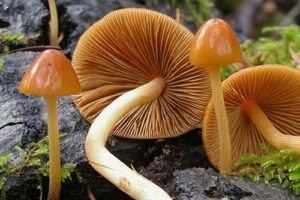Kingdom Fungi Class Agaricomycetes | Division Basidiomycota Order Agaricales Genus Conocybe Rank Species | |
 | ||
Similar Pholiotina smithii, Panaeolus papilionaceus var parvi, Psilocybe fagicola, Psilocybe yungensis, Psilocybe angustipleurocystidiata | ||
Conocybe siligineoides fungi kingdom
Conocybe siligineoides, also known as cone caps, Ya'nte, Ta'a'ya, or Tamu, is a species of macro-fungus in the family Bolbitiaceae. It has seldom been observed by the mycological community with all specimens having been collected in Mexico. Originally reported as a sacred mushroom, no chemical studies have been undertaken on this species although other members of the same genus have been shown to contain psilocybin, which causes strong hallucinations. They are crushed, dried, and used in tea, and consumed fresh also.
Contents
Description
It is a thin, small, about 3 inches (7.6 cm) in height, mushroom that is reddish-orange with a cone or bell shaped cap. When spores are forming the cap will turn a rusty color.
Traditional uses
The Mazatec used this fungus as a entheogenic. The Aztec called them sacred mushrooms and used them for healing and various rituals. A cult in the Ivory Coast of Africa has found to be centered on "Tamu".
